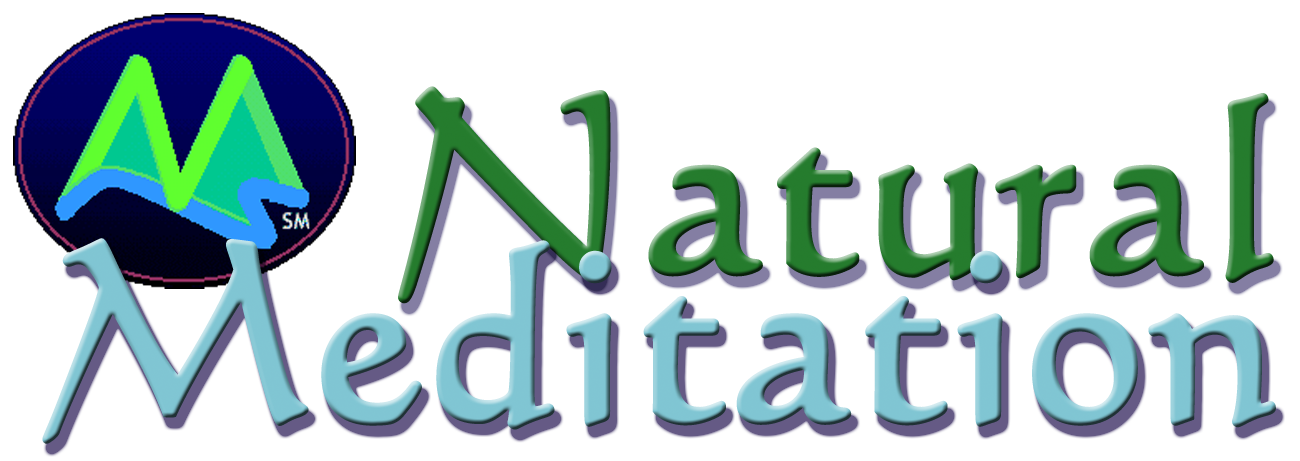
Meditation is Natural
Human Meditative Talent
We all have a natural ability to meditate. And we don’t just mean sitting quietly and settling down. We refer to a scientifically verifiable, profoundly significant shift that happens in the body and mind.
This change is pleasant and refreshing and brings new kinds of healing and nurturing to all aspects of life when done regularly.
The natural meditative function comes into play within a few minutes as long as the person is not struggling or trying to make things happen. We have to step to the side a bit and let nature do the details.
During these kinds of non-striving meditation, the body’s metabolism slows and the mind opens up and settles down. The mind and body work in the background to repair and rejuvenate themselves.
This is a complex, intelligent and effective function. It arises as naturally as sleep, but it works on a different set of mind/body issues than does sleep. Regular experience of this enhances health and produces a long-term conditioning of the body and mind.
We call this function the “meditative function.”
Why call it “natural?”
We use the word natural for any form of meditation that is designed to support and encourage nature’s meditative function. In a phrase, that means the sitter (you, during your sitting of meditation) does almost nothing to interfere with the meditative process that is beginning to take effect in the body and mind.
It is an attitude of receiving, not of working or even of learning. Such an attitude comes into each of us several times a day.
- I liken it to what we do in ourselves after ordering a meal in a restaurant. We do not mentally (or otherwise) work at getting the meal cooked and put on a plate. We are not even trying to learn how it is being done in the kitchen. Most of us don’t even know how that is being done, nor do we know the names or faces of the ones doing it. When the service staff brings it, if we are decent folks, we receive it from them gratefully and begin eating.
- For that matter, as we eat the meal, we have almost the same carefree and receptive attitude regarding what the body is doing with the food once we let it go in a swallow. Yet, holy wonder of life, look what happens: we go on living. Life is given to us.
- The Meditative Function comes into play within us with no more effort than that!
- Yet: Most meditative sitters have no knowledge of what is about to happen in their brain and physiology much less knowing that it is all set up within all of us and just needs to be accepted and given a good place to function–just as sleep and digestion and toilet do.
- And, having no idea this is going to happen…what do they do, most sitters?
- They get involved in making meditation happen on their own.
- And that is fine.
- But that is not natural. Not in the ways I am pointing to here.
- And it isn’t new. It is not my invention. Tibetan Buddhists, in particular, from what I can tell, have been on top of this for centuries.
There are many methods and styles of meditation, each with different flavors and purposes. Natural Meditation, which (Ted Phelps) designed in 1994, is a culturally neutral way of “turning on” the meditative awareness and deep relaxation that is naturally built-into all humans. Other meditation methods can do this too, but most of them have considerable cultural components that can present obstacles for newcomers to meditation. Natural Meditation is like spring water–it has had nothing added.
Natural Meditation goes with the flow of the mind, not against it. It is like paddling a canoe in the direction of the current. You are still in charge and participating gently, but the ride is really being provided by nature, not our own force.
See Doing Meditation for a quick look at its form.
Excerpts from our book
A Course in Meditation: self-paced learning in the art of natural meditation, by Theodore K Phelps.
To help continue your reading about important concepts, we are offering some extended excerpts from the book that can be useful even taken out of context of the Course.
Please note: we offer this text for your information, not as a replacement for a course of instruction. Because the text comes directly from the book, a few references do not make sense without having the rest of the book.
"Open House"
This section opens the book and has always been available on our website. It really is like going to an open house at our school. You will get a taste of both meditation and the Course itself.
What is Meditation?
This text is armchair theory about what sitting meditations are. It is a broad look that applies to most methods. It is useful for someone who might be very new to this topic or for teachers speaking about meditation in a public introdcution.
Natural Meditation, definitions
This is also specialized theory for those who really want to see what we mean by “natural” with meditation. Here you will get five definitions, building from the base of “meditation” that is introduced in the section here called “What is Meditation?”
Natural "Meditative Funtion"
Here is some text taken from Day 3 of the Course. It is the ground concept of both what a natural meditation method is for and how to do such a method. It is all about supporting and activating a function that we already own, but probably don’t know we own or know how to use.
The Science of Meditation
This whole concept that “nature meditates within” and that we can leave the details to nature is founded (yes, on experience!) but also in science of the late 20thC. These brief texts give you the basics on that.
Meditation's Benefits
Well, of course, this stuff is good for you! If you wonder about that, or want some good things to tell your friends or in a lecture, here you go.
10 Steps of Natural Meditation
Just so you don’t wonder how this looks, sort of from the outside, we must note, here is the sequence we teach. You are welcome to try it on your own. But if it leaves you thinking, “This feels like nothing!” or something else off-base, then we know. That is why learning this is an art and takes more than a brochure of tips.
Mindfulness and Our Meditation
Some thoughts about this ever-more popular term, concept, and practice.

